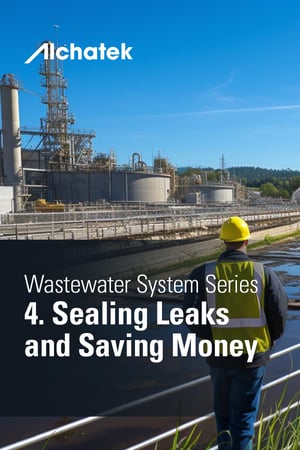
 In the realm of wastewater management, the conversation around repair methods is often punctuated by the concern for cost. For municipal managers and administrators, understanding the financial implications of infrastructure repair decisions is as crucial as comprehending their technical benefits.
In the realm of wastewater management, the conversation around repair methods is often punctuated by the concern for cost. For municipal managers and administrators, understanding the financial implications of infrastructure repair decisions is as crucial as comprehending their technical benefits.
One Hundred Billion Dollars
$100 billion is enough to wipe out all the medical debt in the United States. Or provide permanent shelter for every homeless person in America. More than two and a half million times what the average American worker makes in a year.
According to the article, Inflow and Infiltration: A New Approach, “The American Society of Civil Engineers estimates that inflow and infiltration cost cities in the United States around $100 billion annually. The results of inflow and infiltration are expensive and impactful. Managed improperly, increased water volumes related to inflow and infiltration can raise treatment and pumping costs. Additional to the costs of the construction improvements needed to control inflow and infiltration are the indirect costs that stem from inconvenience to businesses and residents due to basement flooding and overflow. Overall mismanagement also erodes public confidence in a city’s ability to manage the water system, a trust that can be difficult to regain.”
The Economic Efficiency of Polyurethane Grout
The choice of polyurethane grout for leak repair is not only a technical decision but also a financially strategic one. The material's durability and longevity translate directly into cost savings. By forming a robust seal that withstands environmental pressures and chemical erosion, polyurethane grout extends the life of wastewater structures. This long-term sealing solution circumvents the frequent costs associated with temporary fixes and the significant expenditures of full infrastructure replacement.
Analyzing Long-Term Savings
An analysis of long-term savings reveals that the initial investment in polyurethane grout pays dividends. The reduction in maintenance frequency lowers labor costs and minimizes the disruptions to service that often come with repair work. Additionally, the protection it provides against further damage reduces future capital expenditures on infrastructure.
Comparing Costs: Polyurethane Grout vs. Cementitious Grout
When compared to cementitious grout, polyurethane often emerges as the more cost-effective solution. Cementitious grout may be cheaper per pound but requires more frequent reapplication. Polyurethane grout, with its superior adhesion and flexibility, often requires a single application to achieve a lasting seal, providing an economical edge in the long run.
Averting Environmental and Consequential Costs
The use of polyurethane grout contributes to avoiding environmental cleanup costs resulting from leaks. By preventing soil and water contamination, municipalities can sidestep the hefty fines and remediation expenses associated with environmental compliance violations.
Key Takeaways
- Polyurethane grout offers significant direct and indirect cost savings over traditional leak repair methods.
- It reduces the frequency of repairs, thereby cutting down on ongoing maintenance costs.
- Polyurethane grout’s durability averts future capital expenditures on infrastructure replacement.
- Preventing leaks effectively helps avoid environmental cleanup costs and fines.
- The long-term financial benefits support a more strategic allocation of municipal budgets.



